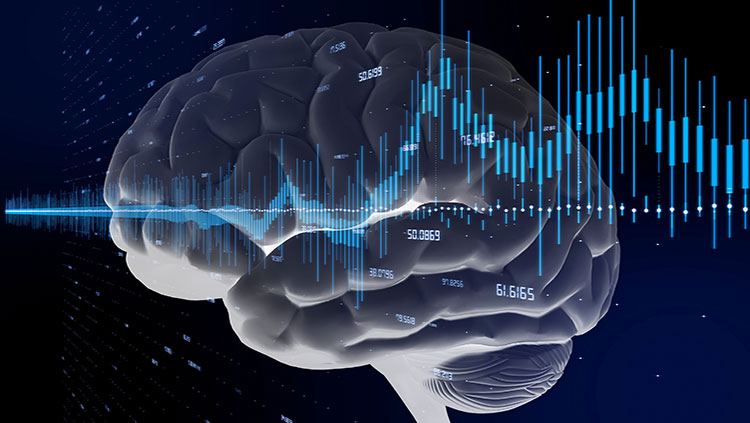The New "Normal" of Brain Aging
- Reviewed8 Aug 2019
- Author Alexis Wnuk
- Source BrainFacts/SfN

An estimated 46 million people worldwide have Alzheimer’s disease, the most common form of dementia. That number is expected to double every 20 years as the population ages and life expectancy increases. But, while aging is inevitable, disability and dementia are not. In fact, neuroscientists believe our brains can remain relatively healthy as we age.
Aging involves subtle changes in brain structure, chemistry, and function that commonly begin in midlife. By the time we reach our 60s and beyond, our brains are usually smaller in size, with decreased blood flow and lower levels of neurotransmitters and hormones. Synapses — the junctions at which brain cells communicate — also weaken as we age.
Although the brain loses some neurons as we grow older, the losses aren’t as dramatic or as widespread as scientists once thought. Likewise, pronounced declines in memory and cognitive abilities are no longer considered natural consequences of the aging process. We now know they’re symptoms of disease processes like dementia, a severe and progressive decline in memory, communication, and thinking.
Nonetheless, some mental decline is normal. Some studies suggest cognition starts declining as early as the 20s and 30s, while other studies indicate cognition improves into the 50s or 60s before declining. A growing area of research focuses on understanding how lifestyle choices such as diet and exercise can support cognitive health throughout life.
This article was adapted from the 8th edition of Brain Facts by Alexis Wnuk.
CONTENT PROVIDED BY
BrainFacts/SfN
References
Bender, A. R., Völkle, M. C., & Raz, N. (2016). Differential aging of cerebral white matter in middle-aged and older adults: A seven-year follow-up. NeuroImage, 125, 74–83. doi: 10.1016/j.neuroimage.2015.10.030
Harada, C. N., Natelson Love, M. C., & Triebel, K. L. (2013). Normal Cognitive Aging. Clinics in Geriatric Medicine, 29(4), 737–752. doi: 10.1016/j.cger.2013.07.002
Hartshorne, J. K., & Germine, L. T. (2015). When Does Cognitive Functioning Peak? The Asynchronous Rise and Fall of Different Cognitive Abilities Across the Life Span. Psychological Science, 26(4), 433–443. doi: 10.1177/0956797614567339
Hedman, A. M., van Haren, N. E. M., Schnack, H. G., Kahn, R. S., & Hulshoff Pol, H. E. (2012). Human brain changes across the life span: A review of 56 longitudinal magnetic resonance imaging studies. Human Brain Mapping, 33(8), 1987–2002. doi: 10.1002/hbm.21334
Kirkwood, T. B. L. (2005). Understanding the Odd Science of Aging. Cell, 120(4), 437–447. doi: 10.1016/j.cell.2005.01.027
Nilsson, L.-G., Sternäng, O., Rönnlund, M., & Nyberg, L. (2009). Challenging the notion of an early-onset of cognitive decline. Neurobiology of Aging, 30(4), 521–524. doi: 10.1016/j.neurobiolaging.2008.11.013
Salthouse, T. A. (2009). When does age-related cognitive decline begin? Neurobiology of Aging, 30(4), 507–514. doi: 10.1016/j.neurobiolaging.2008.09.023
Sowell, E. R., Peterson, B. S., Thompson, P. M., Welcome, S. E., Henkenius, A. L., & Toga, A. W. (2003). Mapping cortical change across the human life span. Nature Neuroscience, 6(3), 309–315. doi: 10.1038/nn1008




.jpg)













